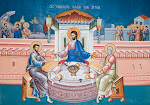Abortion argument unravels : How the unborn child defends itself against its mother, confirming that it is a separate human being from the start
by Alex Williams, Australia
While the demand for abortion grows,1 so does the scientific case against the arguments often used to support it. Recent powerful evidence comes from immunology.
Half a century ago, when the amazing mechanism of the human immune system was first being uncovered, Nobel prize-winning biologist Sir Peter Medawar made a significant comment. He declared that the survival of the genetically different child within a mother’s womb contradicted the immunological laws that were thwarting their attempts at tissue transplantation.2 The immune system normally detects the presence of any “foreign” tissue in the body and it immediately sets up a defence against it (primarily what is now called the “killer T cell” mechanism).
Read more…
This caused early experiments in organ transplantation to fail—the recipient’s immune system attacked and rejected the donor’s “foreign” organ tissue. So why doesn’t the mother’s womb detect the presence of the “foreign” tissue of the developing embryo and try to attack and reject it?
We now know that it does! And this is the cause of many miscarriages. Recent research has shown that the developing child puts up a very specific defence against the killer T cell attack. And as long as the defence mechanism works properly, the pregnancy will proceed to full term. However, when the defence mechanism fails, miscarriage results.
Tumour hijacks fetal enzymeThe lead author of the 1998 paper on IDO referred to in the main text, David Munn, has continued his research on IDO’s role elsewhere in the body and found an exactly parallel process to the pregnancy case at work in the body’s tolerance of tumours.1 Just as the embryo produces IDO to protect itself from the mother’s immune system, so rogue tumour cells also use the same trick to stop a person’s immune system from attacking and rejecting the tumour. These insights are helping to find new ways of treating tumours and reducing the rejection rate of surgical transplants.Reference1. Munn, D.H. and Mellor, A.L., IDO and tolerance to tumours, Trends in Molecular Medicine 10(1):15–18, 2004.
In a landmark 1998 paper, researchers at the Medical College of Georgia, in Augusta, USA, found that the mammalian embryo (they worked with mice) produces a special enzyme, called indoleamine 2,3-dioxygenase, or “IDO,” which suppresses the mother’s T cell reaction and allows pregnancy to proceed.2 Follow-up work in humans revealed the same effect, and it was also demonstrated that the IDO was produced on the embryo side of the placental membrane (which separates mother from child) and not on the mother’s side.3 Further work in mice showed that IDO production peaked during the formation of the placenta—the most crucial time for establishing that vital link between mother and child.4 And the most recent work in humans has established beyond doubt that IDO is a specific mechanism at the mother-child interface for preventing the mother’s immune system from rejecting the child.5
But what does this have to do with abortion? Well, a common argument in favour of abortion is that a mother has the right to control what happens to her own body.6 However, this research shows very clearly that the baby is not part of the mother’s body. The baby has a unique genetic makeup (only half its chromosomes come from the mother, the other half come from the father, and each combination of chromosomes is unique) and that condition is sufficient to cause the mother’s immune system to identify the baby as “foreign” and it mounts an attack via the killer T cell system. In the mouse experiments, when IDO production was artificially suppressed, the mother’s womb rapidly rejected the embryos.2 It is only because the baby is normally well prepared for life in the womb by producing IDO and suppressing the mother’s T cell reaction, that pregnancy can be healthy and go full term.
This research also highlights the fact that the child’s individuality—its unique genetic makeup—exists from the moment of conception. At conception, the new person’s genetic instructions come together for the first time—in a single cell called the zygote. But it is not until day 6 that IDO production kicks in.5 Why day 6? Well day 6 is a preparation for day 7, when the new embryo first attaches itself to its mother’s womb so that it can draw nutrients from its mother’s bloodstream.7 This is exactly the time when the mother’s killer T cells would normally begin to attack and reject it—if not for the amazing protection already provided by IDO production on the previous day.
Psalm 139:13 tells us that God “knit me together in my mother’s womb” and in Isaiah 46:3 God says “you whom I have upheld since you were conceived” (NIV). IDO is a marvellous part of God’s system for individually “upholding” us in the womb and we should not violate it, or indeed the commandment not to take innocent human life, through the proliferation of abortion.
References and notes
1. For example, legally restricted late-term (>20 weeks) abortion was introduced into Western Australia in 1998. Under this legislation, 95% of requests have been granted and abortions as late as 8 months have been approved. See Dickinson, J.E., Late pregnancy termination within a legislated medical environment, Aust. N.Z.J. Obstet. Gynaecol. 44(4):337–341, 2004. Return to text.
2. Munn, D.H. et al., Prevention of allogeneic fetal rejection by tryptophan catabolism, Science 281(5380):1122–1124, 1998. Return to text.
3. Kudo, Y. and Boyd, C.A., Human placental indoleamine 2,3-dioxygenase: cellular localization and characterization of an enzyme preventing fetal rejection, Biochim. Biophys. Acta. 1500(1):119–124, 2000. Return to text.
4. Suzuki, S. et al., Expression of indoleamine 2,3-dioxygenase and tryptophan 2,3-dioxygenase in early concepti, Biochem. J. 355(2):425–429, 2001. Return to text.
5. Kudo, Y. et al., Indoleamine 2,3-dioxygenase: distribution and function in the developing human placenta, J. Reprod. Immunol. 61(2):87–98, 2004. Return to text.
For example, pro-abortion objectivist philosopher Dr Leonard Peikoff (colleague and heir of objectivist founder Ayn Rand) has stated, “during the first trimester [the embryo] is a mass of relatively undifferentiated cells that exist as a part of a woman’s body.”
6.
7. The steps in this process can be viewed at
Source: www.answersingenesis.org





12.jpg)























.jpg)








Δεν υπάρχουν σχόλια:
Δημοσίευση σχολίου